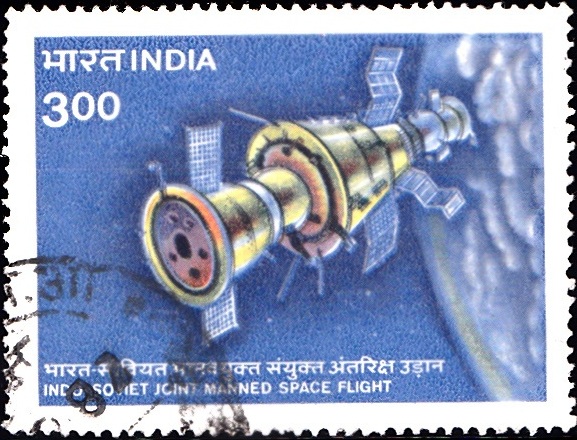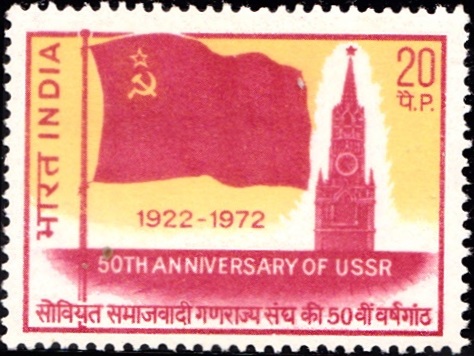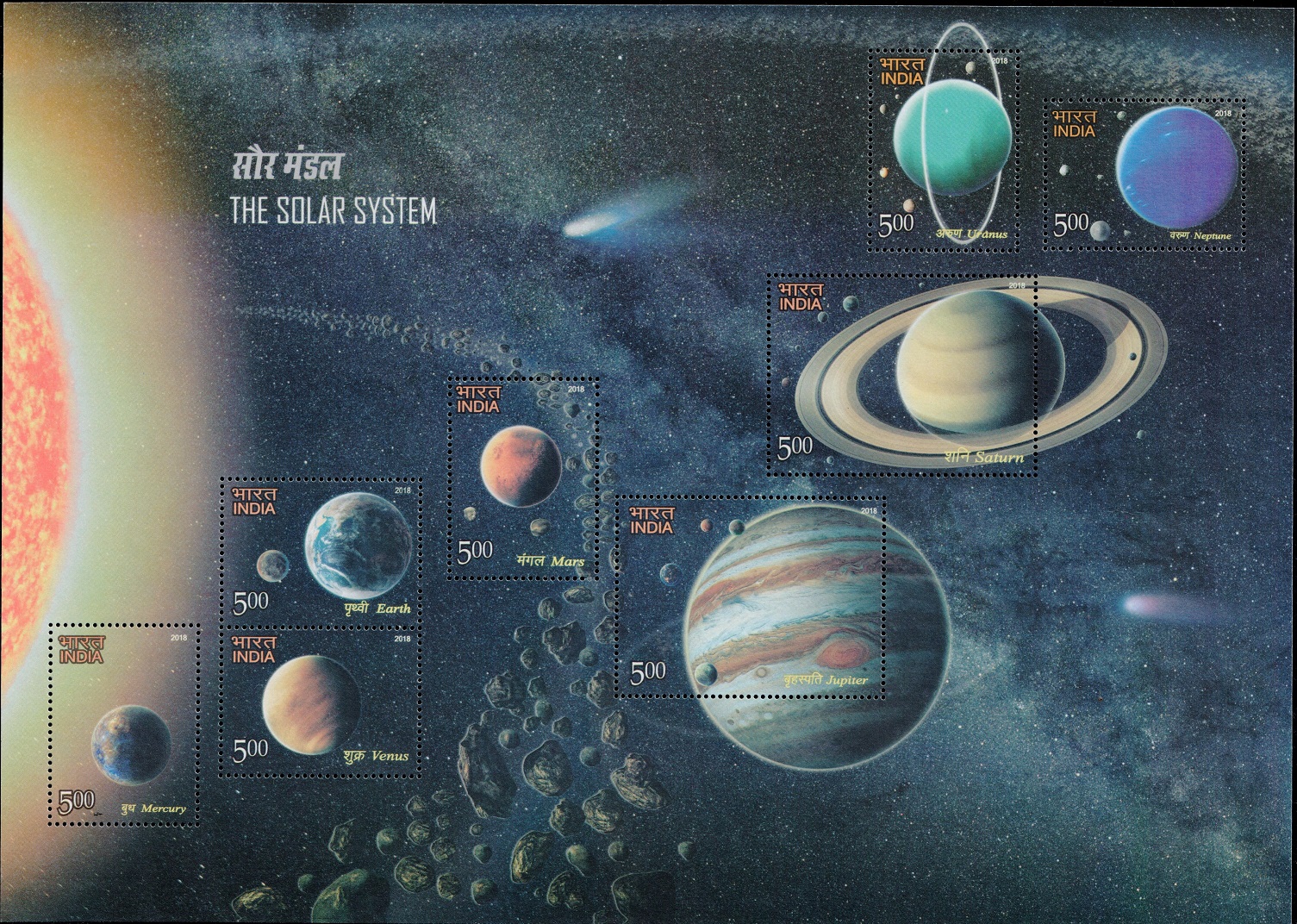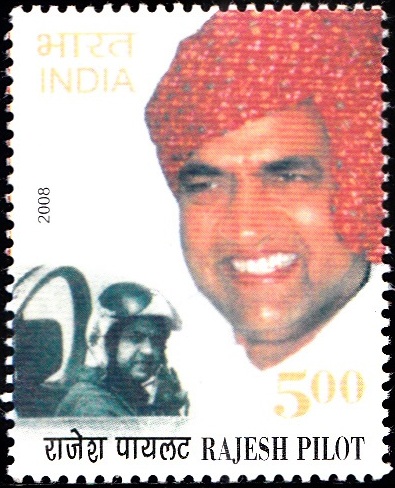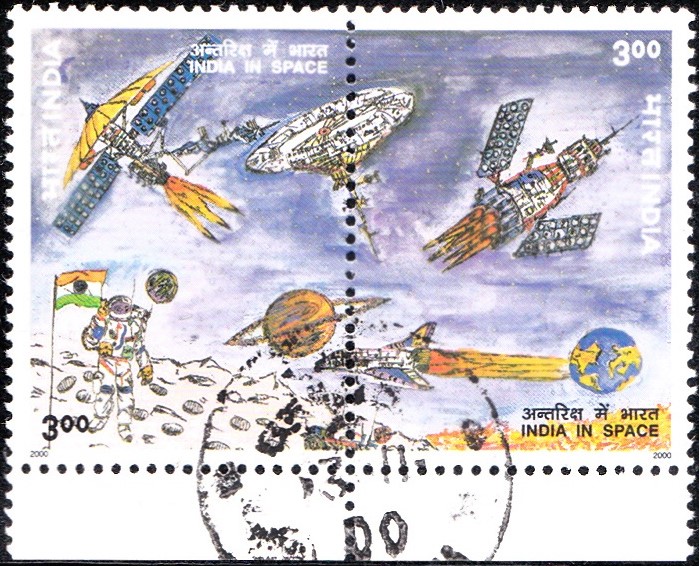
India on Yuri Gagarin
A commemorative postage stamp on the 40th Anniversary of Man‘s First Space Flight :

 Issued by India
Issued by India
Issued on Apr 12, 2001
Issued for : The Department of Posts is proud to issue a postage stamp on Yuri Gagarin.
Credits :
Stamp : Sankha Samanta
FDC : Design layout by Nenu Gupta based on the material furnished by the sponsors.
Cancellation : Nenu Gupta
Type : Stamp, Mint condition
Colour : Four Colour
Denomination : 1500 Paise
Overall size : 2.90 x 3.91 cms.
Printing Size : 2.90 x 3.91 cms.
Perforation : 13.5 x 13.5
Paper : Matt Chromo
Stamps Printed : 0.8 million
Number per issue sheet : 40
Printing Process : Photo Offset
Printer : Calcutta Security Printers Ltd.
Name : Yuri Alekseyevich Gagarin
Born on Mar 9, 1934 at Klushino, Russia
Died on Mar 27, 1968 at Kirzhach, Russia
About :
- On April 12, 2001, the world celebrated the 40th anniversary of man’s first space flight. The Department of Posts commemorated this event and the memory of Yuri Alexeyevich Gagarin (1934-1968), who became the first man to escape the gravity well of planet earth and orbit the earth, travelling in the space ship Vostok 1. This led to many other space-flights and revelations about the outer space.
- Gagarin hailed from Klushino, a small village 100 miles west of Moscow, and his parents were workers in a Kolkhoz (collective farm). As a teenager, his ambition was to become a pilot. He studied maths and physics in the secondary school and went on to join a trade school where he became a foundry-man. The works of Longfellow, Victor Hugo, Charles Dickens and the Russian rocket pioneer Konstantin Tsiolkovsky influenced him in his formative years. Later he joined the technical school in Saratov, where he also got the chance to join a flying club and to realise his dream of becoming a pilot. He joined the Soviet Air-Force and went to Orenburg Aviation School, where he learned to fly MIGs. It was at the Aviation School that he met Valentina Ivanovna Goryacheva whom he married later. In 1957, at the age of 23, Yuri graduated with top ranking honours from Orenburg and became a Lieutenant in the Soviet Air-Force.
- Yuri Gagarin had secretly harboured an ambition to join the space programme, ever since the Soviet Union announced their plans of sending a man to space. In 1959, he submitted a request to be considered for cosmonaut training and was selected. He underwent the extreme physical, mental and psychological rigours of the training in a calm and resolute manner and finished at the top. Finally he was chosen for the historic, but dangerous voyage into outer space. Chief Designer Korolev, the head of the Soviet Space Programme commented later : “A good pilot is one who, in one minute of flight, can make enough observations, and draw enough conclusions, to keep an entire institute busy with them for a whole year. A bad pilot can fly for a whole week but only obtain enough information for an hour’s work. What pleased us so much about Gagarin was that in 108 minutes he was able to see a great deal and enrich science with valuable information and conclusions.”
- Following his return to earth, Yuri Gagarin received a hero’s welcome, not just in his country, but all over the world. He embarked on a world tour as an ambassador of goodwill. Gagarin, the quintessential cosmonaut wanted to reach the stars again, and began training for the first Soyuz flight in 1967. However, he died in an unfortunate accident on March 27, 1968, when the jet he was test piloting crashed. In honour of his great contribution to space exploration, a crater on the moon was named after him.
- Though the 40th anniversary of Yuri Gagarin’s space flight was an occasion for celebration for all the nations of the world, it had a special significance for India because of the long tradition of Indo-Soviet collaboration in space science, dating back to the early sixties. The collaboration further intensified during the seventies, when three Indian satellites, Aryabhatta, Bhaskara-I and Bhaskara-II were launched from the erstwhile USSR. The Indo-Soviet joint manned mission conducted in April 1984, on board the Soyuz T-II space station was another highlight of the collaboration between the two countries.
- Text : Based on material supplied by the sponsors.


